Ursus americanus
Taxonomy: Ursus americanus [Pallas, 1780]: Native Americans long recognized the “black bear” as a distinct, less dangerous species than grizzly bears. Black bears were also well known to European colonists in eastern North America since the 1600s. In the early 1770s, Samuel Hearne, a British explorer and naturalist, travelled extensively in northern Canada and reported seeing many black bears (as well as polar bears and evidence of “grizzled bears”), commenting in his detailed journal records on their hibernation, food habits, and common use by native people (including hunting methods and even attempted domestication). However, the publication of Hearne’s scientific account was delayed until 1795 (after his death), 15 years after Peter Simon Pallas, a German zoologist, observed live bears that had been shipped to Europe and officially named the species the American black bear, Ursus americanus. [See separate page: Discovering and Naming Bear Species for Science.] This name has been retained, except during the early half of the 1900s, when some biologists used the generic name Euarctos for this species (and considered each of the 8 bears a separate genus). Sixteen subspecies have been named based on morphology and geographic isolation. Some of these gained special legal protections, particularly in southeastern U.S. However, recent genetics work suggests that the number of subspecies may be too high, and some may be too ill-defined to be considered subspecies.
Distinctive characteristics: This is a medium-sized bear with a straight profile from forehead to nose, and no hump on its shoulders (distinguishing it from the grizzly bear). Claws are short and curved on both front and hind feet, well suited for climbing (also unlike the grizzly bear). Ears are not as large as the Asiatic black bear, but may appear especially large in young bears, with smaller heads. Although commonly known as the American black bear, coat color (even within a single litter) ranges from black to various shades of brown (including a reddish-orange color called cinnamon) to blond. Black-colored bears predominate in the eastern and northern parts of the range, whereas the proportion of brown-colored individuals is higher in western states, possibly associated with temperature regulation in more open habitats. Brown-colored black bears are common in California, Arizona, New Mexico, and parts of the Rocky Mountains. A rare white (non-albino) color phase, associated with a single recessive gene, occurs in coastal British Columbia (called the Kermode bear or Spirit bear). A very rare “blue” (grey) color phase known as the glacier bear occurs along the southeast coast of Alaska and northwestern British Columbia. These rare color phases appear to be maintained through isolation of populations containing the particular gene. The white Kermode color phase also seems to confer an advantage over the black color phase in fishing for salmon during daylight hours. No selective advantage is known for the grey glacier color phase, but populations containing this color morph are isolated by glacier-covered mountains or marine fjords.
American black bears sometimes have a white chest marking, although the size and shape varies among individuals rather than being distinctively shaped across the species (unlike the distinctive crescent-shaped marking in Asiatic black bears and sloth bears). The occurrence of a chest blaze varies among populations. Cubs are often born with a white chest marking, which may disappear after molting during their first year of life.
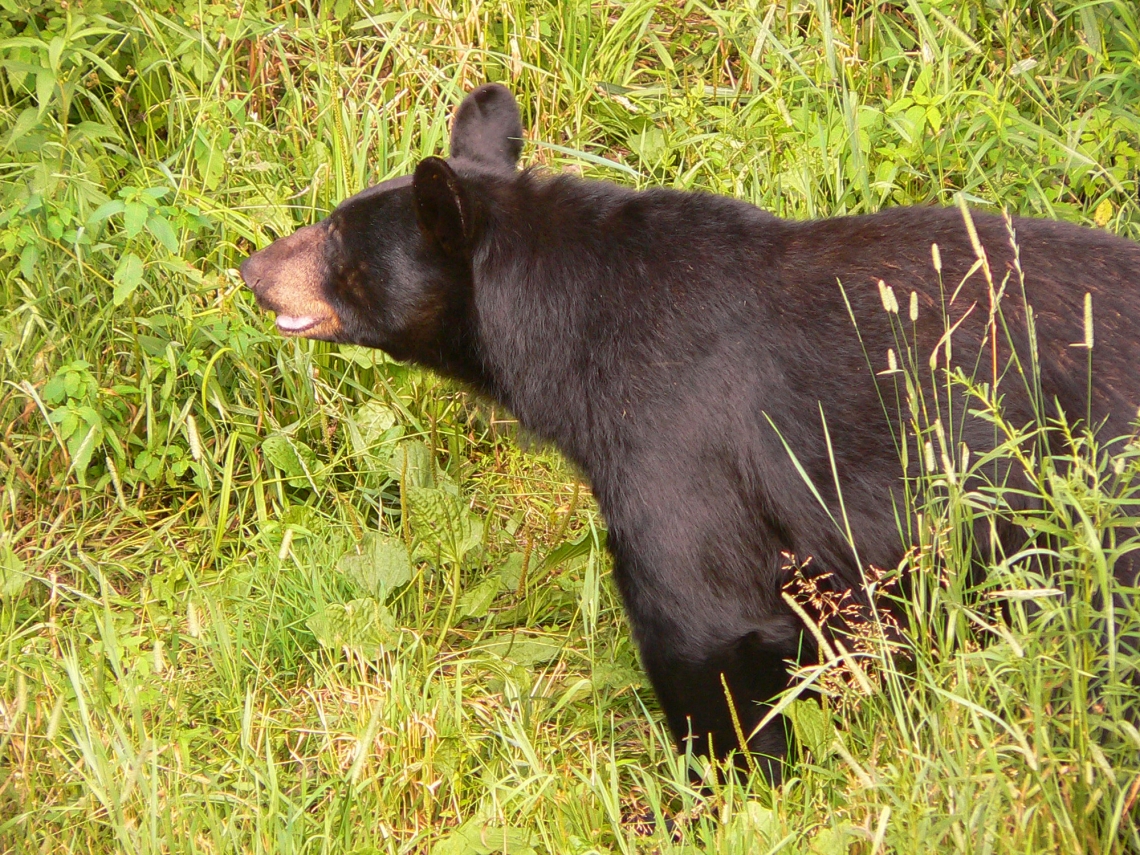
American black bear_U americanus Minnesota_straight facial profile_D Garshelis
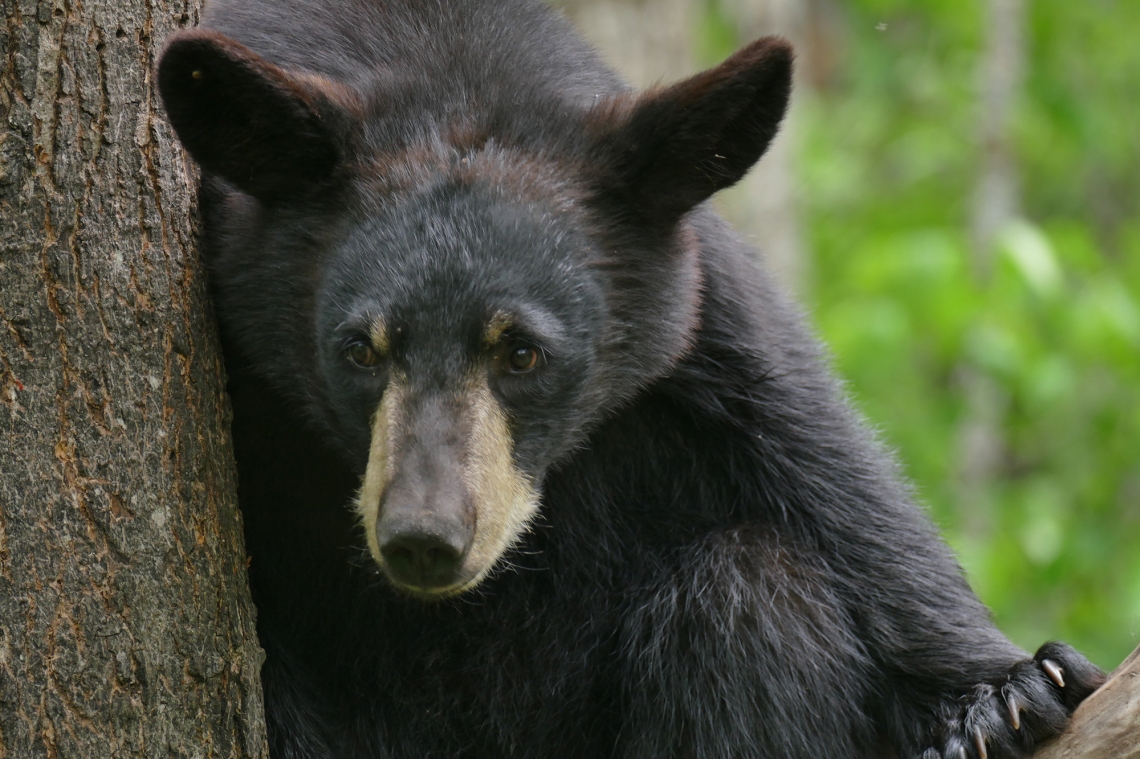
American black bear_U americanus Minnesota_prominant ears characteristic of small bear_D Garshelis
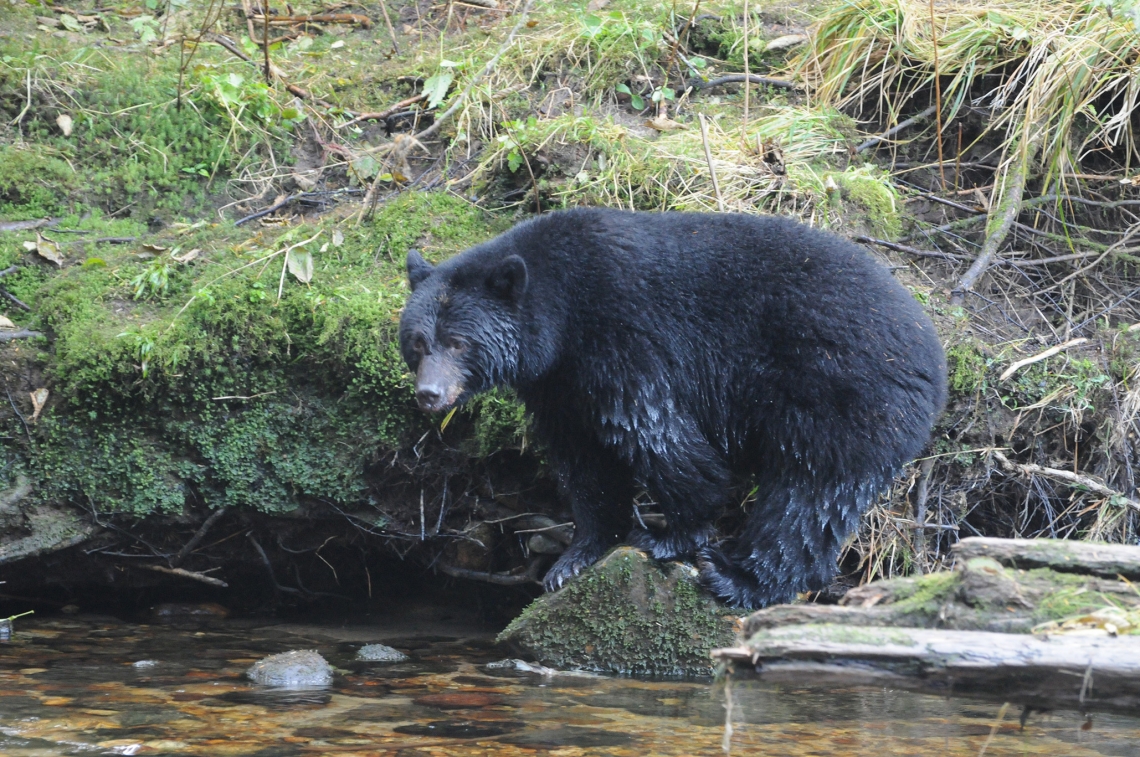
American black bear_U americanus British Columbia_black phase_J Beecham
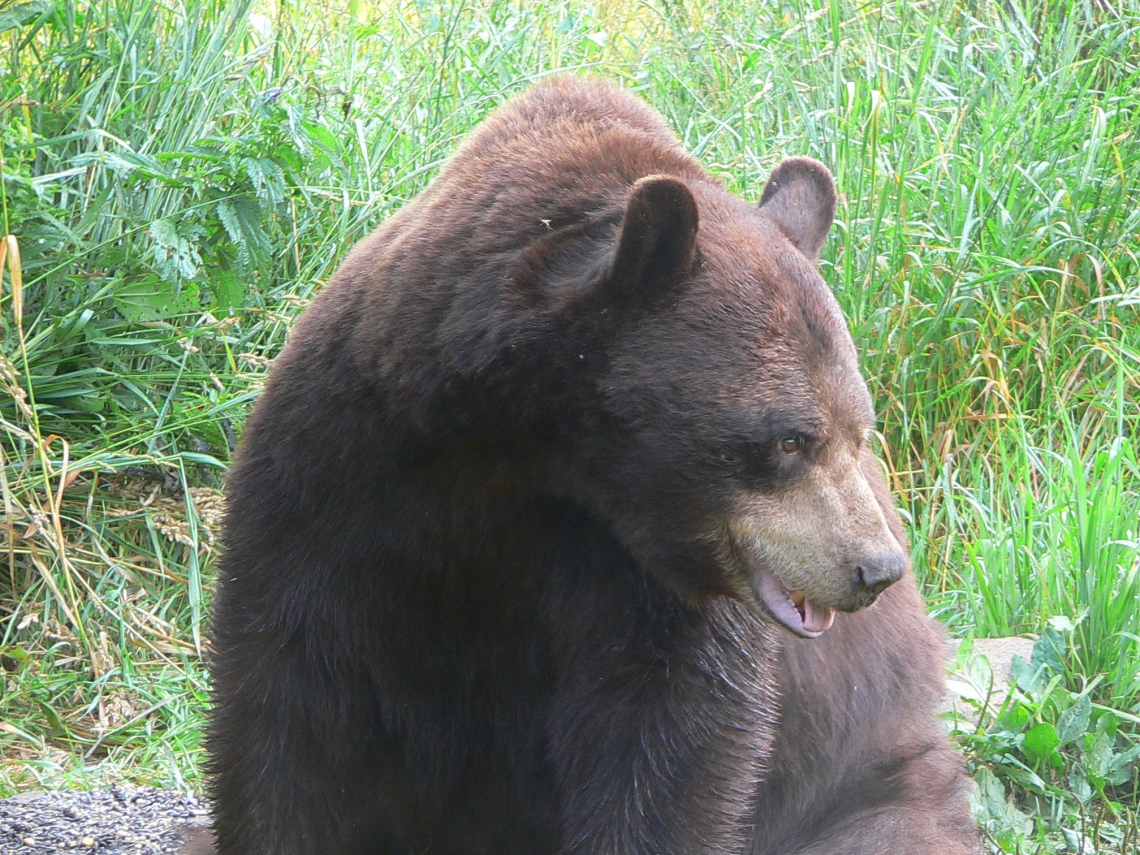
American black bear_U americanus Minnesota_chocolate color phase_D Garshelis

American black bear_U americanus Minnesota_cinnamon color phase_D Garshelis
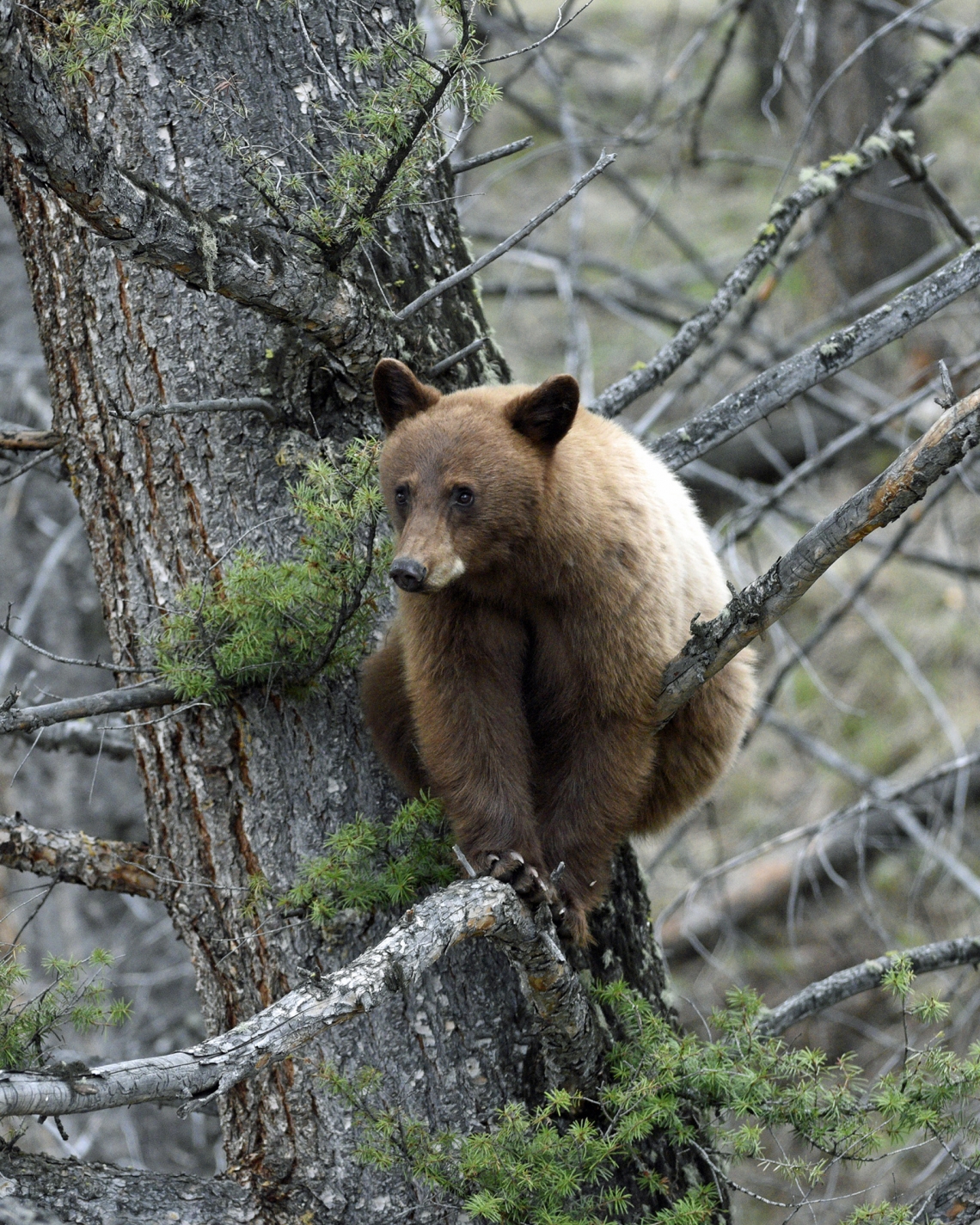
American black bear_U americanus Yosemite National Park California_blonde color phase_T Sharp
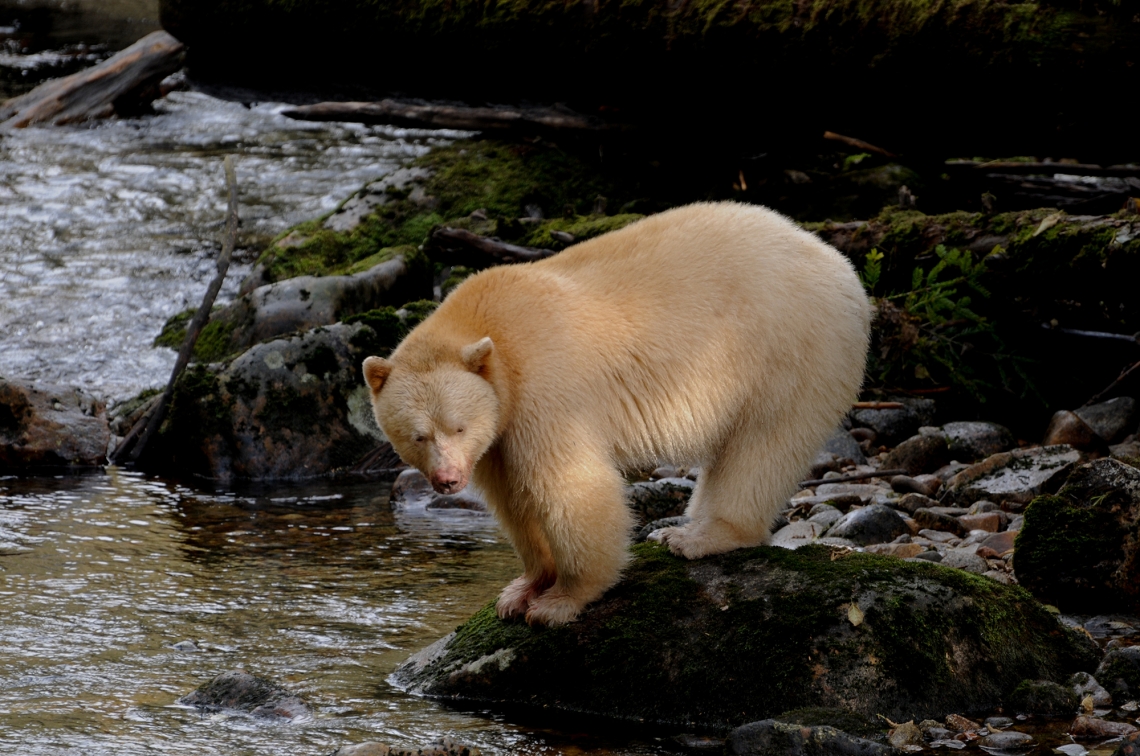
American black bear_U americanus British Columbia_white phase Kermode bear_J Beecham
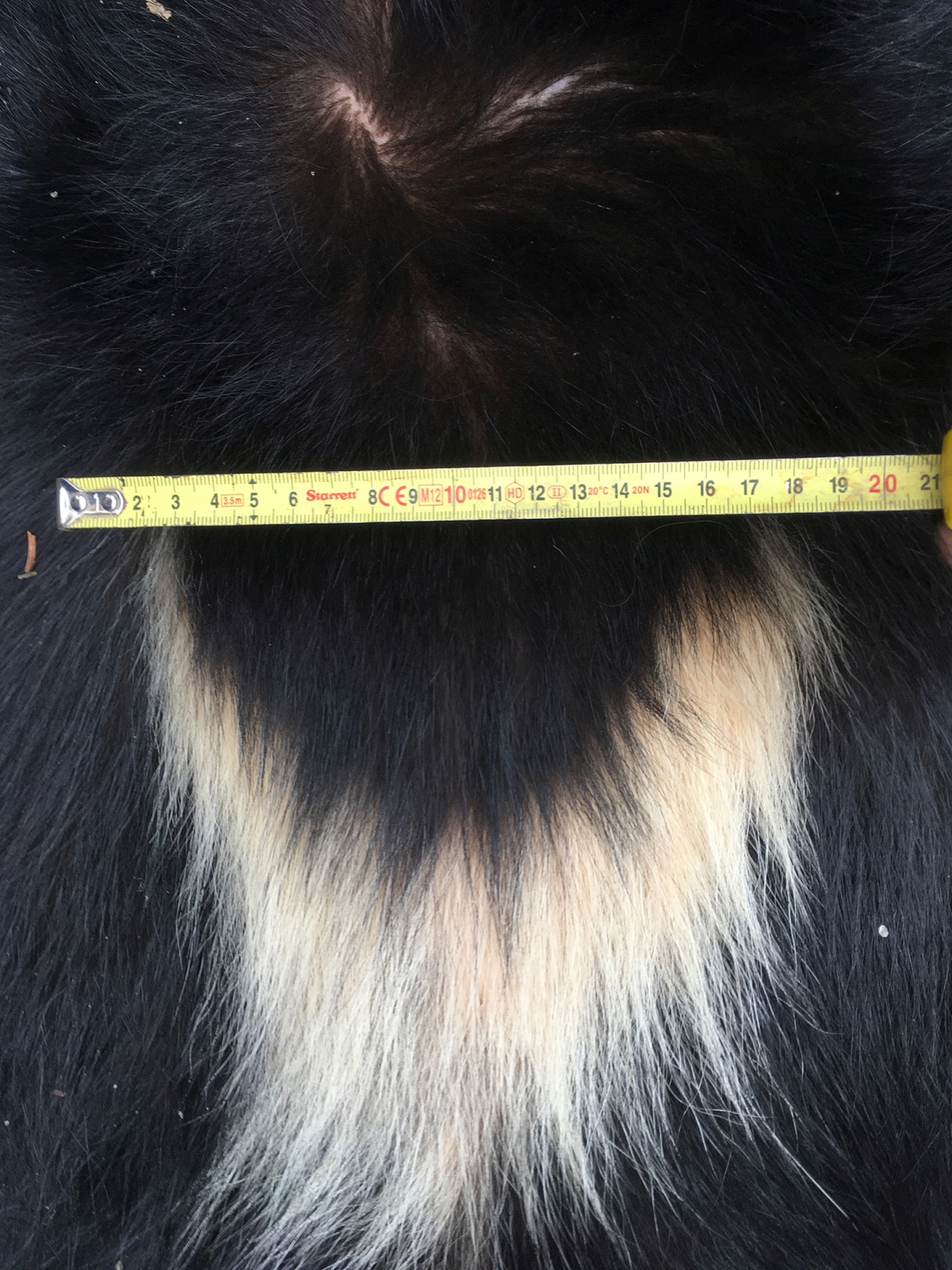
American black bear_U americanus Minnesota_prominent white chest blaze common in some populations rare in others_D Garshelis
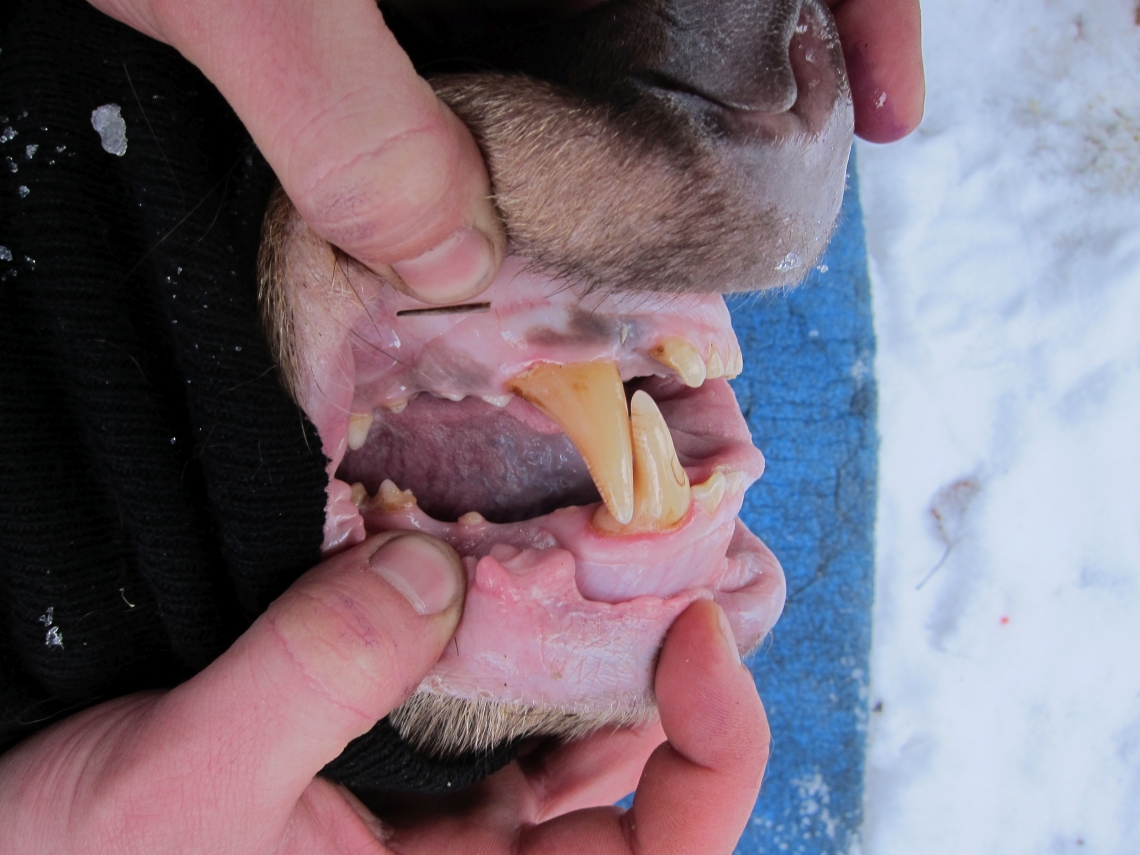
American black bear_U americanus_Minnesota_teeth, showing incisors, canines, premolars_D Garshelis
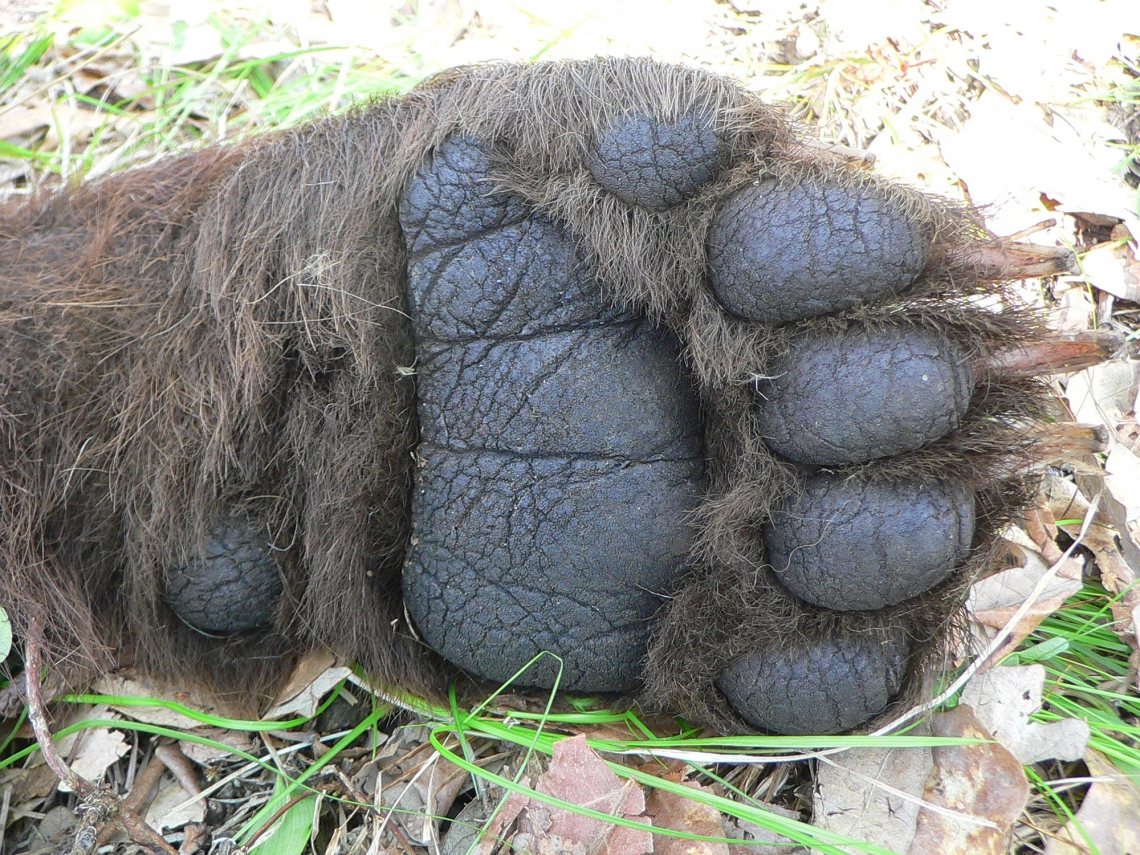
American black bear_U americanus Minnesota_front paw_D Garshelis

American black bear_Minnesota_rear right foot (note big toe on outside)_D Garshelis
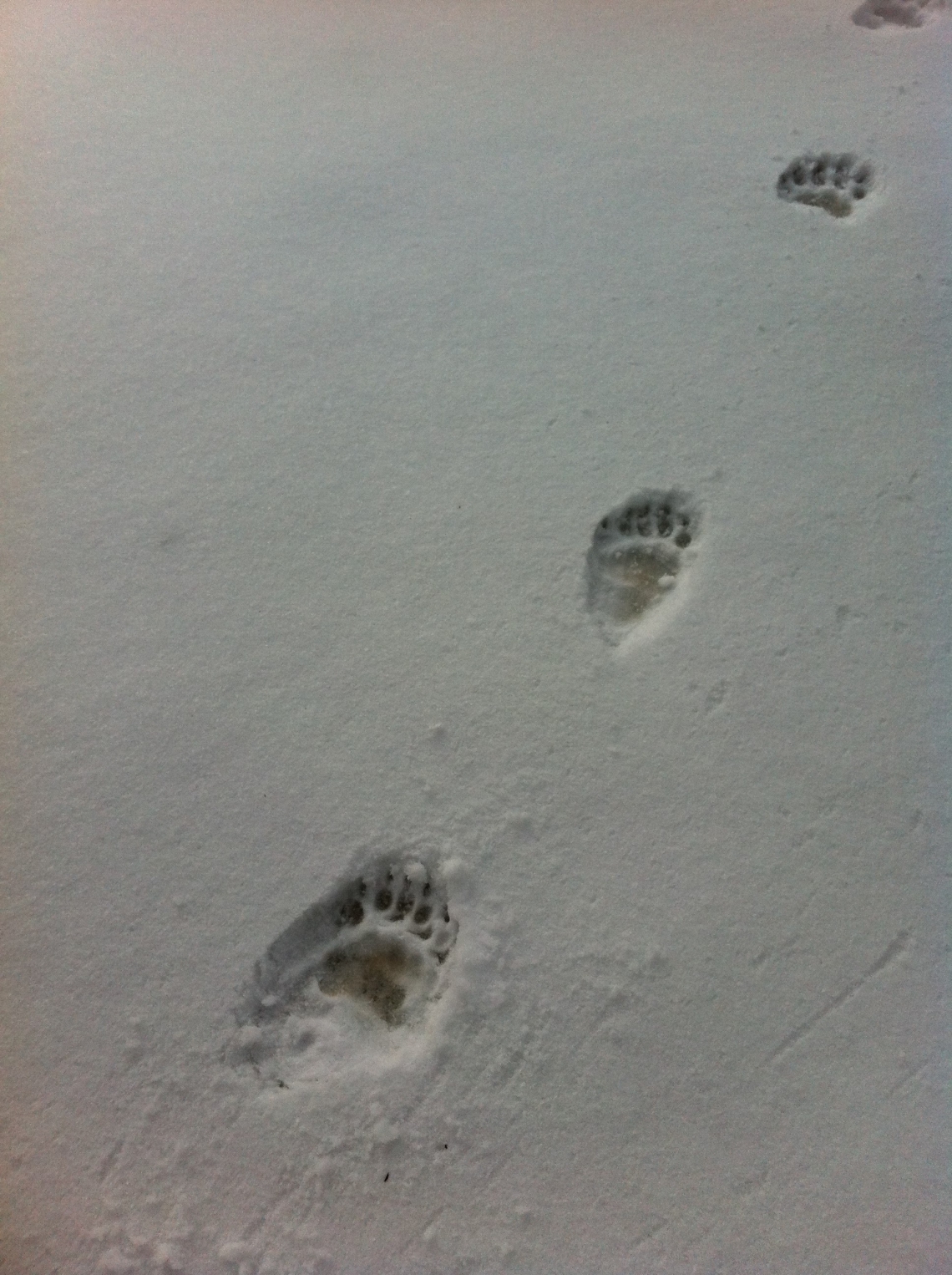
American black bear_U americanus_Minnesota_tracks in snow_D Garshelis
Distinctive behaviors: American black bears are typically unaggressive toward people, and often can habituate to human activity and may benefit nutritionally from consuming human-related foods. They are more tolerant of people than other species of bears. They may use small woodlots near homes, and even den near roads, railroad tracks, or houses. When in human-populated areas, they may shift to more nocturnal activity to reduce contact with people. Nevertheless, a few black bear attacks on people occur annually across their range, some of which are fatal. Attacks are sometimes instigated by the bear chasing an off-leash pet dog. It is a myth, though, that these bears become aggressive if a person just happens to walk between a mother and her cubs. Often cubs will climb a tree if they perceive danger, and remain until called down with a distinctive guttural sound by the mother. Mothers may wander and forage sizeable distances (and for several hours) from a tree where her cubs have taken refuge. All sex and ages are able tree climbers.
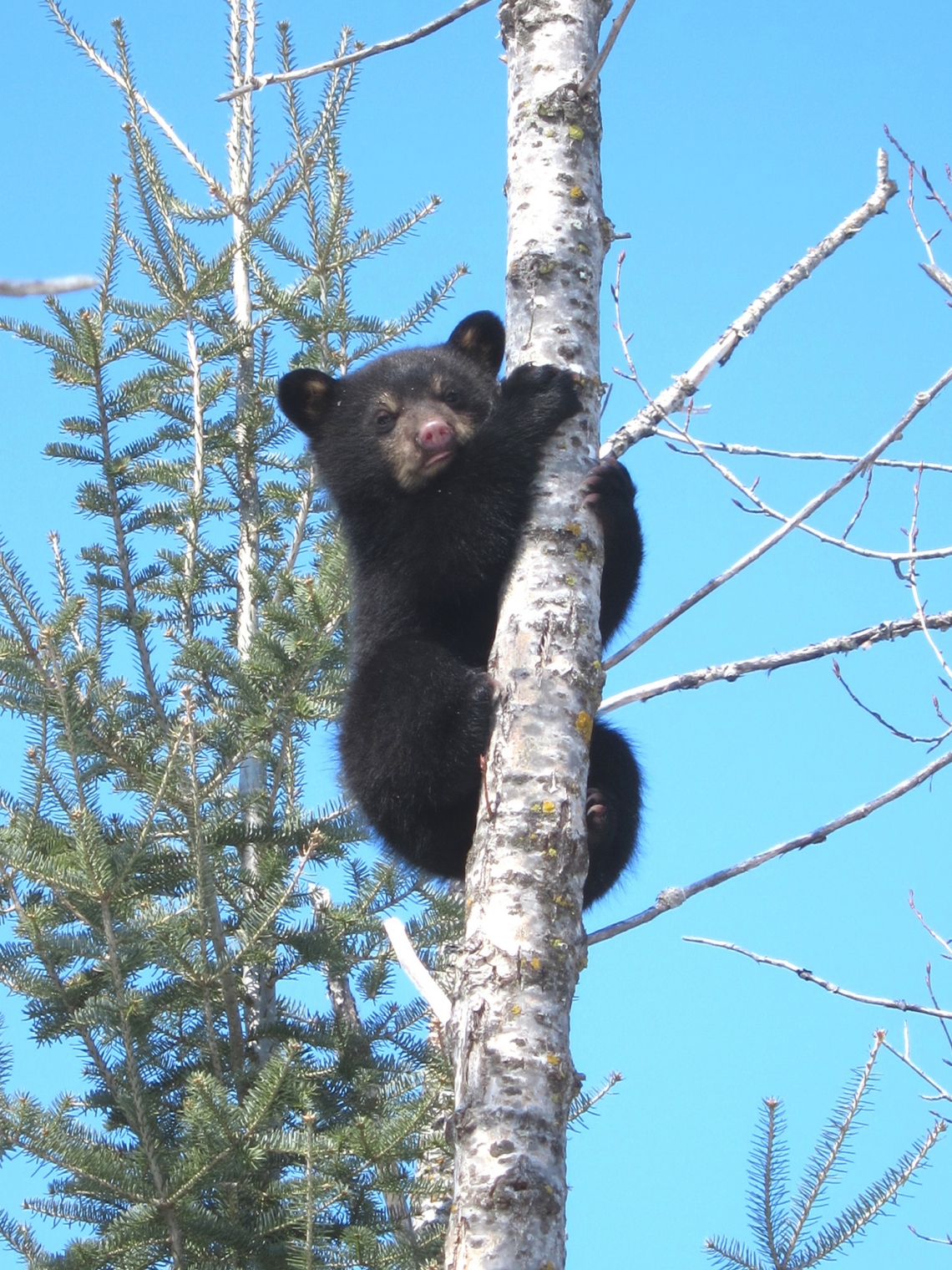
American black bear_U americanus_Minnesota_cub escaping danger in aspen tree_D Garshelis
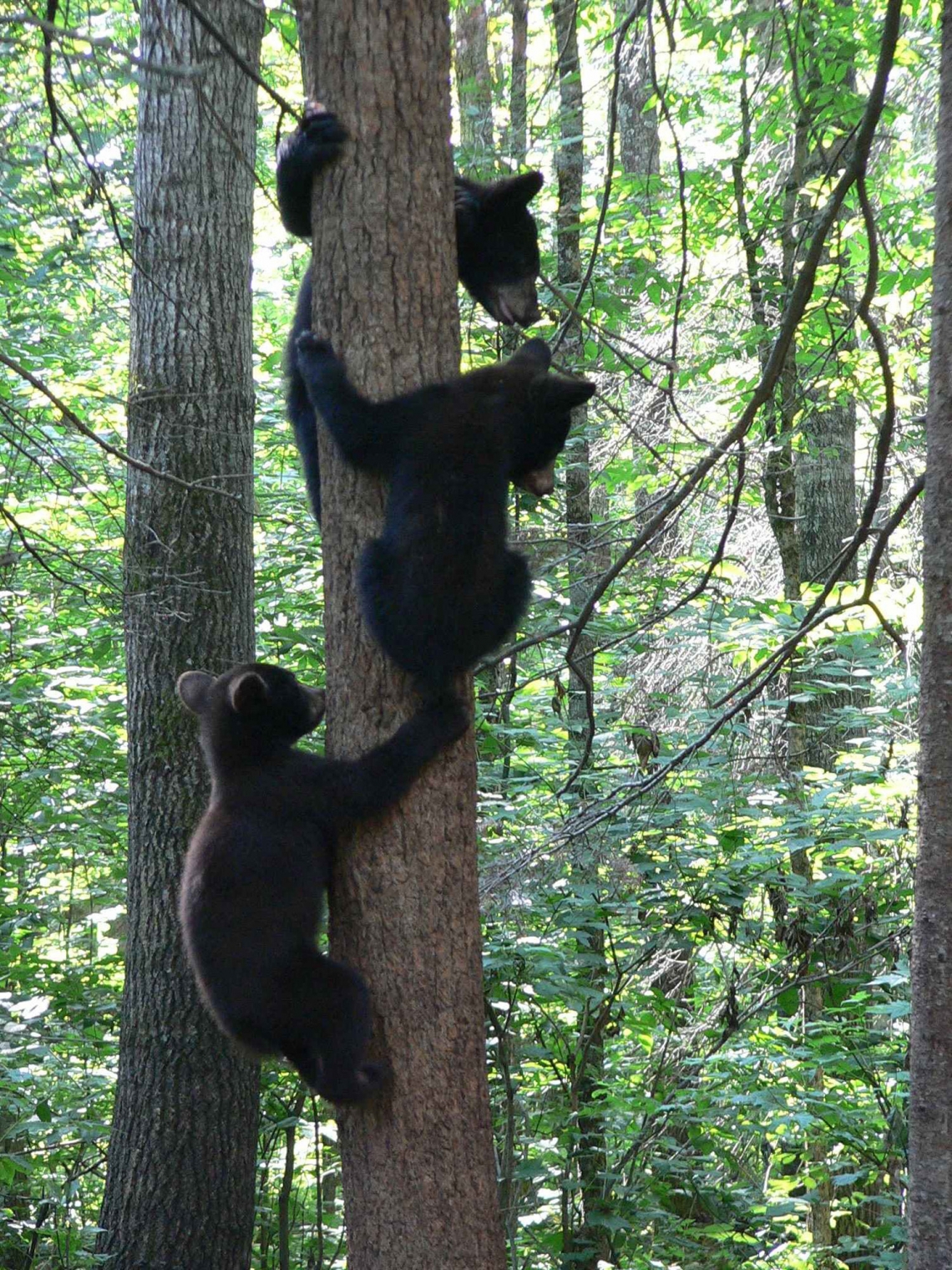
American black bear_U americanus_Minnesota_family of cubs in tree_D Garshelis
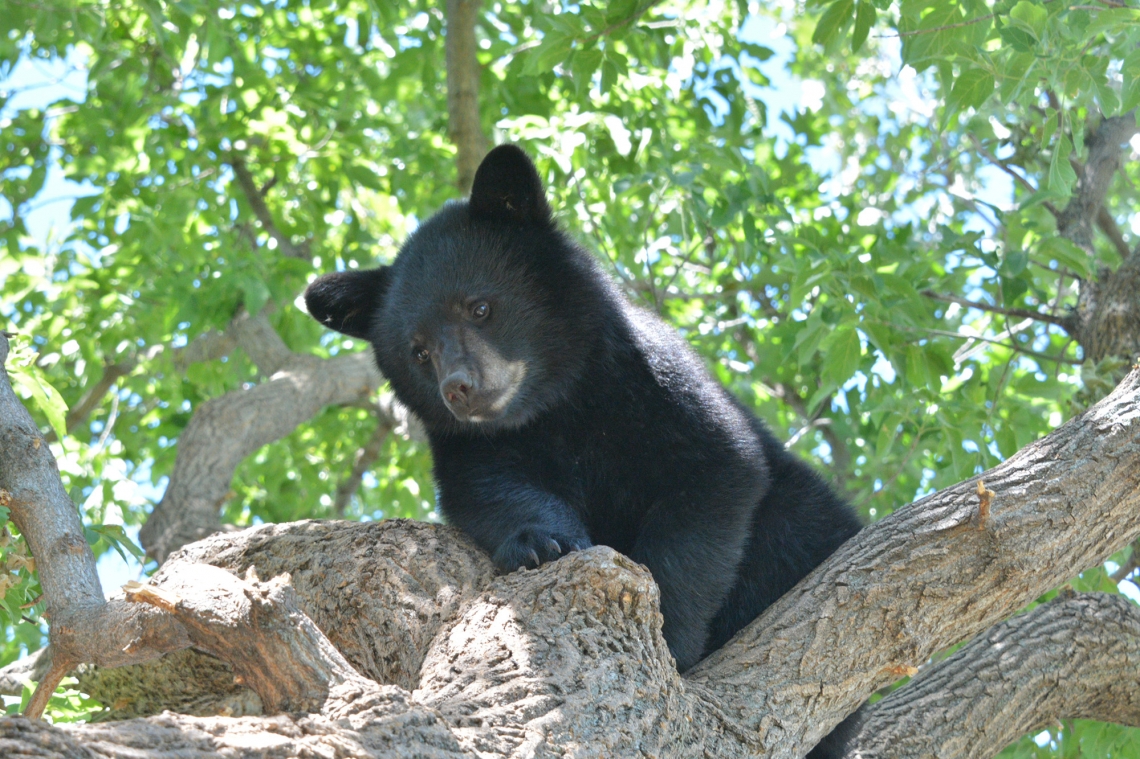
American black bear_U americanus_Manitoba_cub in tree_ J Beecham

American black bear_U americanus_Minnesota_ mother in tree_D Garshelis

American black bear_U americanus_Minnesota_scent marking on power pole by adult female during breeding season_B Hemly
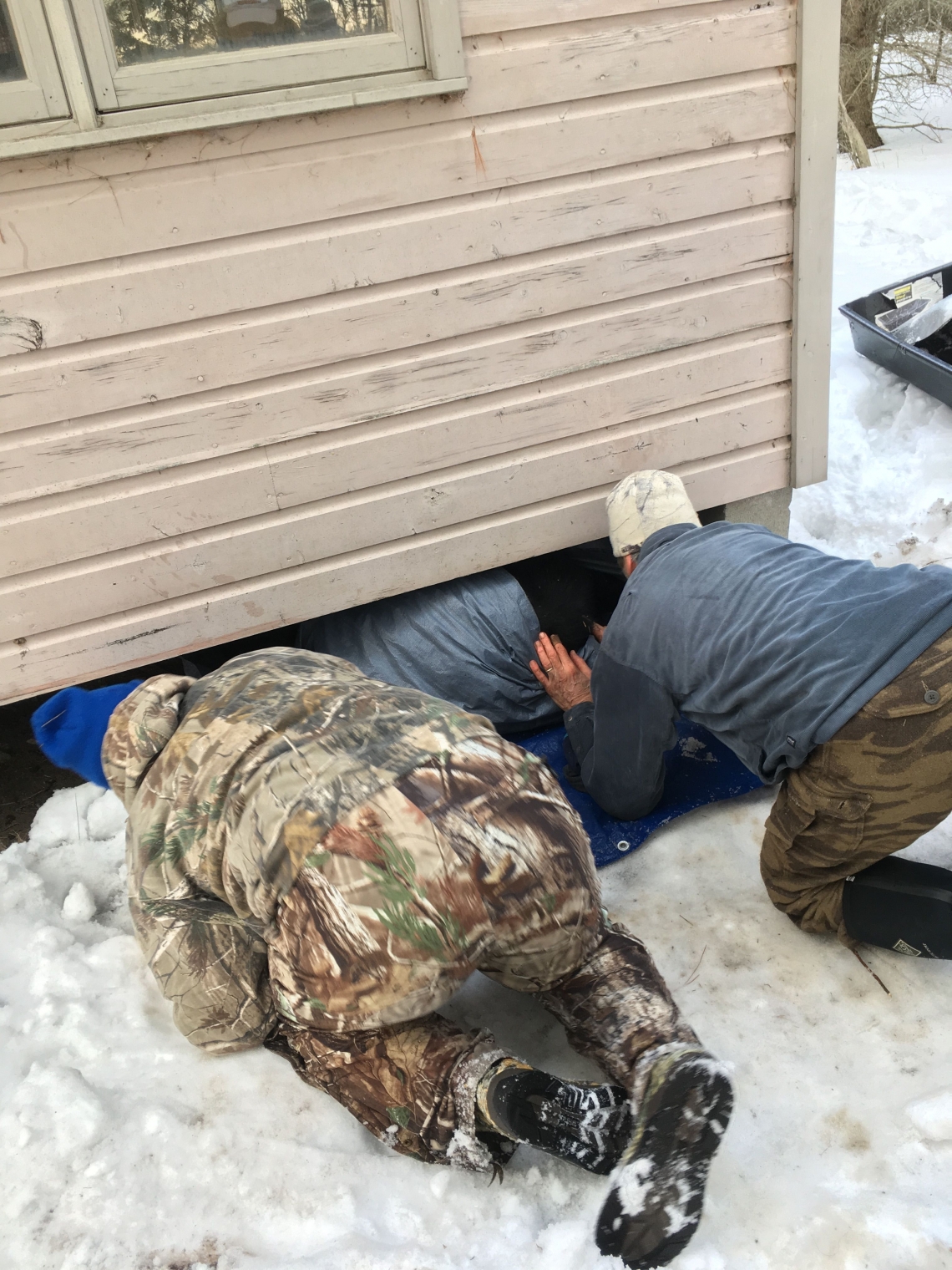
American black bear_U americanus_Minnesota_researchers temporarily removing denned bear from under house_D Garshelis